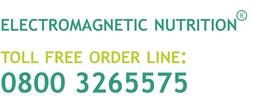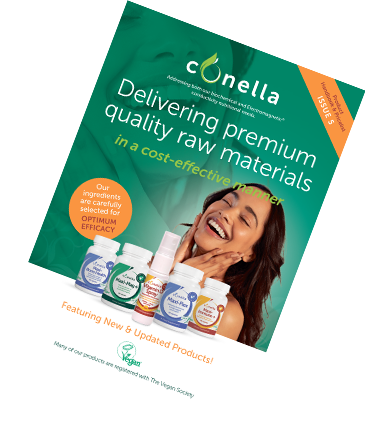Introduction
When people strongly believe something to be right, they often refer to ‘knowing its right in their bones’, yet how often do we stop to consider what’s really right for our bones and our bone health, often ignoring their needs until problems occur, usually later in life, in our hips knees etc.
Poor bone health leads to osteoporosis, or ‘brittle bones’, where our bones become less dense and break easily. The UK has the second highest rates of osteoporosis in the world, next to the US, with more than 3 million people being affected (NHS, 2019).
Hip fractures are the most serious consequences of brittle bones, leading to a reduction in survival of 10-20% in women and 30% in men. Up to 20% of women with hip fractures die within a year, and a further 25% require long-term care (Shepherd, 2004; Pizzorno & Murray, 2007).
So, taking care of our bone health throughout our lifetime is vital to reduce our risk of becoming part of these concerning statistics.
Bone functions
Our bones have several important functions, besides the obvious one of providing shape and structure to our stature, including: -
- Protection — Bones provide protection to our internal organs
- Blood production – Bone marrow produces red and white blood cells
- Mineral storage – Bones store important minerals until they are required, such as calcium and phosphorus
- Movement – Bones, muscles, tendons, ligaments, and joints work together to enable movement
- Acid-base balance – Bone moderates the pH balance of blood to prevent excessive changes by absorbing or releasing alkaline salts
- Sound transduction – Bones play an important part in the mechanics of hearing
(Shepherd, 2004; Pizzorno & Murray, 2007)
Formation and breakdown of bone
There are two main types of cells involved in bone formation and breaking down: -
- Osteoblasts – cells that assist in formation of bone
- Osteoclasts – cells that breakdown or resorb old bone material
Bone formation is at its most efficient during childhood with bone formation exceeding resorption. It peaks in our 30’s and plateaus for around 10 years, then declines thereafter, particularly in women, once they reach menopause.
The reason women are affected more significantly is due to the relationship between bone formation and oestrogen. Oestrogen receptors found in bone play an important role in production and maintenance of both osteoblasts and osteoclasts. Declining oestrogen levels following menopause can increase bone loss up to ten times its pre-menopausal rate (Shepherd, 2004).
Other factors influencing bone health
There are several other factors besides age and gender which also significantly impact on bone health: -
Epigenetics[LS1]
Unfortunately, genetic predispositions we are born with have a huge influence on our bone density, putting us a greater risk of osteoporosis if family members are also sufferers.
Medications
Certain medications may have a detrimental impact on bone health, including steroids, antacids, and anti-depressants. Steroids interfere with bone formation and stimulate resorption, antacids suppress stomach acid which impact absorption of nutrients needed for healthy bones and anti-depressants may increase the risk of falls and resulting fractures by affecting balance and alertness (Brown, 2017).
Low body weight
Weight loss or low body weight, particularly in post-menopausal women has been found in numerous studies to increase osteoporosis risk (Compston et al, 2016). This is partly due to slimmer people having less bone to lose and partly due to less bone stimulation because of their lower body mass. Or, if following a restrictive diet for a prolonged period, sufficient nutrients required to support bone health are less likely to be consumed. It may surprise you to know that women who are slightly overweight have better calcium absorption and less post-menopausal bone loss than women of a normal weight (Stransky & Rysava, 2009). Of course, cardiovascular risk from being overweight should also be considered.
Vitamin D deficiency
Optimal vitamin D levels are vital for efficient calcium absorption and bone turnover and deficiency increases the risk of poor bone density. We synthesise vitamin D through our skin via exposure to sunlight and given that in the UK our overall exposure to sunlight tends to be low, vitamin D deficiency is extremely common. This reduces our ability to absorb calcium and increases our risk of developing osteoporosis (Royal Osteoporosis Society, 2020). There is also evidence to suggest optimal vitamin D levels decrease the risk of falls amongst the elderly (Uusi-Rasi et al, 2019).
Digestive health
Efficient digestion is key to all aspects of our health, including our bones, because we need to digest and absorb our nutrients properly to benefit from them. Imbalances in digestion increases the risk of poor bone health. As we age our ability to absorb calcium through the intestines naturally declines, so paying attention to our digestive health, as well as eating plenty of bone supportive nutrients is a key part of maintaining healthy bones (Stransky & Rysava, 2009).
Diet
Of course, we need to be eating a healthy, balanced, and varied diet, rich in bone supporting nutrients to help maintain our bone health (more on this later). But to maintain healthy bones, it is also important to eat a more alkaline rather than acidic diet. This means eating a predominantly plant based and whole food diet and limiting our intake of acid forming foods, such as carbonated drinks, processed foods, alcohol, caffeine, salt, and dairy. An alkalising diet helps to preserve bone density by preventing the need for our bones to release vital minerals like calcium and magnesium to alkalise our blood, therefore helping to prevent bone loss.
Lifestyle factors bone health
Activity levels
Exercise is essential to maintain healthy bones and physically fit post-menopausal women have 25 % higher intestinal absorption of calcium and calcitriol blood levels than unfit ones.
Particularly helpful forms of exercise include walking, dancing, and resistance training (Shepherd, 2004).
Toxic exposure
Several studies have shown toxic exposure increases bone resorption in both children and women, decreasing bone density (Basu et al, 2001; Sughis et al, 2011; Shutte et al, 2008). Therefore, reducing our toxic exposure is important to maintain healthy bones. Eating organic and using non-toxic cleaning, laundry and cosmetic products and filtering our water can all help to reduce our toxic load.
Smoking
Studies have found a direct relationship between smoking and imbalances in bone turnover, resulting in reduced bone density. However, smoking cessation does appear to reverse this negative effect (Al-Bashaireh et al, 2018).
Stress
Studies have found a direct relationship between high cortisol levels (our main stress hormone), reduced bone health and increased fracture risk (Rodriguez, E.G. et al, 2017). Managing our stress response is therefore important to maintain good bone health. Mindfulness, Epsom salt baths, walking in nature and spending time doing things you enjoy with those important to us are all key to managing the impact of stress.
Nutritional Strategies to support bone health
Alkaline diet
As previously mentioned, an alkaline diet supports prevention of calcium displacement from the bones back into our blood stream to counteract acidity.
Calcium
Most people are aware of the importance of calcium for bone health and of its presence in dairy foods. but calcium is also abundant in many other foods, including sardines, tinned salmon, whitebait, nuts, seeds, legumes, leafy greens like kale and spinach, rhubarb, oranges, edamame, tofu, figs, dried fruit, oats, rice, molasses, and many more foods are fortified with calcium.
The recommended daily intake of calcium is 1000 mg per day for most adults, but women over 50 and everyone over 70 require 1200 mg per day. Children between 4-18 need an even higher intake of 1300 mg per day (Jennings, 2018). The average Western diet delivers more than adequate calcium levels. In fact some studies have even suggested we may be eating excessive amounts of calcium, which may then be displaced from our bones, finding its way into our soft tissues like the aorta and our arteries and potentially increasing our risk of developing cardiovascular disease by clogging up or calcifying in those areas (Seely, 1991). More research however is needed to confirm or refute these findings.
Traditionally dairy has always been touted as being the greatest source of calcium to protect our bone health, however studies looking at the efficacy of dairy consumption in protecting bone health have shown mixed results. Some studies have confirmed dairy consumption appears to have a positive impact on bone health (Van Den Hueval et al, 2018), but other studies have concluded that dairy actually has no effect in terms of reducing the risk of osteoporosis and fractures (Malmir et al, 2020). Overall, most research suggests consuming dairy may have a positive impact on bone health, however, given that calcium is widely available in many other foods, it may not be essential for healthy bones.
From a Nutritionists perspective, dairy has a less positive effect on other aspects of our health, including digestion, inflammation, and hormone balance, so it may be wise to focus more on alternative calcium sources to meet our daily requirements.
From a naturopathic perspective, dairy is an acid forming food which would stimulate calcium displacement from our bones back into our bloodstream to help the body to maintain a healthy pH. This could be another potential argument for obtaining calcium from other food sources.
Magnesium
Magnesium is considered equally, if not more important than calcium for bone health. In fact, 60% of the magnesium within the human body is stored in bone. Magnesium sits on the surface of bones, available to be exchanged in the blood as and when required. It has several functions in relation to bone health: -
- Bone Maintenance
- Influences bone-forming cells
- Modulates potential bone damaging inflammation
- Increases absorption of calcium and phosphorous
- Low magnesium impacts on our ability to utilise vitamin D and parathyroid hormone
Brown (2020)
Magnesium rich foods include avocados, nuts, legumes, dark chocolate, leafy greens, seeds, wholegrains, fatty fish, bananas.
Table 1 shows the recommended daily intakes for magnesium, depending on age, gender and whether pregnant or lactating.
Table 1: Recommended Dietary Allowances (RDAs) for Magnesium [1] |
||||
|
Age |
Male |
Female |
Pregnancy |
Lactation |
|
Birth to 6 months |
30 mg* |
30 mg* |
||
|
7–12 months |
75 mg* |
75 mg* |
||
|
1–3 years |
80 mg |
80 mg |
||
|
4–8 years |
130 mg |
130 mg |
||
|
9–13 years |
240 mg |
240 mg |
||
|
14–18 years |
410 mg |
360 mg |
400 mg |
360 mg |
|
19–30 years |
400 mg |
310 mg |
350 mg |
310 mg |
|
31–50 years |
420 mg |
320 mg |
360 mg |
320 mg |
|
51+ years |
420 mg |
320 mg |
||
(NIH, 2020)
Despite magnesium being available in a wide range of foods, one in five women aged 19-34 years and more than half of teenage girls have intakes below the LRNI (51% of 11-14 age group and 53% of 15-18 age group) and more than 20% of boys aged 11-14 years are also at risk of low intakes (British Nutrition Foundation, 2018)
Although our daily requirements for magnesium are lower, magnesium is easily depleted during times of stress, increasing our need, and often leading to deficiency (Cuciureanu & Kink, 2011). In fact, magnesium deficiency is much more common than calcium deficiency. This could potentially explain why the NHS only report a 1-2% improvement in bone density from calcium supplements (NHS, 2015). Calcium supplements, particularly carbonate forms may also lead to reduced stomach acid (in the same way as antacid medication), which then impacts on absorption of magnesium and other essential nutrients.
When considering supplementation of calcium or magnesium, it is important to take good quality, organic sources for improved absorption and efficacy. The upper tolerable limit for calcium is 2,000mg per day and for magnesium 800 mg per day. It is extremely important not to exceed these dosages (Osiecki, 2014).
Potassium
According to a study published in The Journal of Clinical Endocrinology & Metabolism, ingesting potassium citrate could be beneficial for our bone health.
They found that the administration of potassium citrate alongside vitamin D and calcium could represent an inexpensive and effective intervention to improve overall bone health among the older generation (Jehle et al, 2013). This is thought to be due in part to the alkalising effect potassium has.
Vitamin D
Given the importance of vitamin D, as mentioned above, it is well worth getting our levels checked and supplementing to bring them into the optimum range. The supplement dosage varies depending on our starting levels and too much vitamin D can have a detrimental impact on our health, so it is worth consulting with a Nutritional Therapist about appropriate dosage.
Vitamin K
Vitamin K1 is required to convert inactive osteocalcin (a protein produced by osteoblasts instrumental in bone formation) to its active form and can be found in dark green leafy vegetables, broccoli, lettuce, cabbage, spinach, and green tea.
Numerous studies have shown that vitamin K2 can induce significant reductions in bone loss in postmenopausal women with osteoporosis, especially when used in conjunction with calcium and vitamin D (Pizzorno & Murray, 2007).
Boron
Boron is needed for the conversion of vitamin D2 to vitamin D3 and the activation of oestrogen and may mimic some of the effects of oestrogen therapy in postmenopausal women.
Supplementing the diet of postmenopausal women with 3 mg/day of boron reduced urinary calcium excretion by 44% and dramatically increased the levels of 17-beta-oestradiol (Stransky & Rysava, 2009).
Zinc
Zinc is important to support bone matrix production and can be found in shellfish, beef, lamb, chicken, oats, shitake mushrooms, pumpkin seeds, legumes, cashews, spinach, avocado, almonds, and ricotta cheese (Stransky & Rysava, 2009).
B6, B12, Folic acid
Low levels of these B vitamins result in high homocysteine levels, which interferes with collagen cross-linking and leads to a defective bone matrix (Stransky & Rysava, 2009).
B6 rich foods include dairy, salmon, tuna, eggs, chicken liver, beef, carrots, spinach, sweet potato, peas, bananas, chickpeas, and avocados
B12 rich foods are mostly found in animal sources, such as dairy, meat, fish, and eggs.
Foods rich in folate include legumes, asparagus, eggs, leafy greens, citrus fruit, brussels sprouts, broccoli, papaya, bananas, avocado, and liver.
Soy and phytoestrogens
Study findings are very mixed, but some research suggests that soy and phytoestrogen foods may have a modest bone preserving effect (Alekel et al, 2010).
Reducing phytate consumption (impairs absorption of key nutrients)
Foods rich in phytates like grains, legumes, nuts, seeds, and potatoes tend to impair calcium absorption, so should be eaten in moderation for optimal bone health (Amalraj & Pius, 2015).
Consider salt intake
For each 500mg of salt consumed, calcium loss through urine is increased by 4-5% so limiting salt intake in advisable to help preserve and optimise bone density (Massey & Whiting, 1996).
Optimise detoxification
To minimise the impact of toxins on bone health and displacement of calcium, it is important to support liver detoxification. The function of your liver is split into two: phase 1 and phase 2.
To ensure phase 1 is working well, you need to eat:
Brassicas; broccoli, cauliflower, cabbage, brussel sprouts, spinach and kale
Vitamin B foods; asparagus, spirulina, almonds, avocado, barley grass, eggs, broccoli, halibut, mackerel, sardines, salmon, sunflower seeds, sweet potatoes, carrots, walnuts
Vitamin C foods; broccoli, blackcurrant, brussel sprouts, pineapples, strawberries, sweet potatoes, citrus fruits
To ensure phase 2 is working well, you need to eat:
Cruciferous vegetables, red cabbage, eggs. Onions, asparagus, garlic, leeks, beet juice and salmon
Juicing or a good green powder blend may also provide additional support.
Address any digestive health issues
Once any toxins have been cleared by the liver, we then need to ensure we are eliminating regularly to prevent toxins from recirculating and impact on bone health. Staying well hydrated and eating plenty of fresh fruit and vegetables helps with this process.
For additional digestive support, including the following in our diet may also help: -
Papaya, pineapple, and apple cider vinegar before meals to stimulate stomach acid and digestive enzymes.
bone broth or cabbage water to support gastrointestinal integrity
Pre and probiotic foods to top up our good tummy bugs and help them thrive.
Prebiotic foods include garlic, onions, leeks, artichokes, and wholegrains.
Probiotic foods include live yogurt, kefir, kombucha, sauerkraut, kimchi, and tempeh.
It may also be beneficial to take a probiotic supplement.
References
Al-Bashaireh, A.M. et al. (2018). The Effect of Tobacco Smoking on Bone Mass: An Overview of Pathophysiologic Mechanisms. J Osteoporos. 1206235. Available at: https://pubmed.ncbi.nlm.nih.gov/30631414/ (Accessed 01/11/20).
Alekel, D.L. et al. (2010). The soy isoflavones for reducing bone loss (SIRBL) study: a 3-y randomized controlled trial in postmenopausal women. Am J Clin Nutr. 91(1):218-30. Available at: https://pubmed.ncbi.nlm.nih.gov/19906801/ (Accessed 01/11/20)
Amalraj, A. & Pius, A. (2015). Bioavailability of calcium and its absorption inhibitors in raw and cooked green leafy vegetables commonly consumed in India--an in vitro study. Food Chem. 170:430-6. Available at: https://pubmed.ncbi.nlm.nih.gov/25306367/ (Accessed 01/11/20)
Basu, S. et al. (2001). Association between oxidative stress and bone mineral density. Biochem Biophys Res Commun. 288(1):275-9. Available at: https://pubmed.ncbi.nlm.nih.gov/11594785/ (Accessed 01/11/20).
Cuciureanu, M.D. & Vink, R. (2011). Magnesium and Stress. Vink R, Nechifor M, editors. Magnesium in the Central Nervous System. 29920004. Available at: https://pubmed.ncbi.nlm.nih.gov/29920004/ (Accessed 01/11/20)
Compston et al, (2016). Increase in Fracture Risk Following Unintentional Weight Loss in Postmenopausal Women: The Global Longitudinal Study of Osteoporosis in Women. J Bone Miner Res. 31(7): 1466–1472. Available at: https://www.ncbi.nlm.nih.gov/pmc/articles/PMC4935593/ (Accessed 30/10/20)
Jehle, S. et al. (2013). Effect of Potassium Citrate on Bone Density, Microarchitecture, and Fracture Risk in Healthy Older Adults without Osteoporosis: A Randomized Controlled Trial. The Journal of Clinical Endocrinology & Metabolism. 98(1):207–217. Available at: https://academic.oup.com/jcem/article/98/1/207/2823184 (Accessed 01/11/20)
Malmir, H. et al. (2020). Consumption of milk and dairy products and risk of osteoporosis and hip fracture: a systematic review and Meta-analysis. Crit Rev Food Sci Nutr. 60(10):1722-1737. Available at: https://pubmed.ncbi.nlm.nih.gov/30909722/ (Accessed 01/11/20)
Massey, L.K. & Whiting, S.J. (1996). Dietary salt, urinary calcium, and bone loss. Journal of Bone and Mineral Research. 11(6). Available at: https://asbmr.onlinelibrary.wiley.com/doi/abs/10.1002/jbmr.5650110603 (Accessed 01/11/20)
Osiecki, H. (2014). The Nutrient Bible. Bioconcepts; 9th edition. Pp. 164, 183
Pizzorno, J. & Murray, M. (2007). Textbook of natural medicine. e-dition. Missouri:Elsevier
Rodriguez, E. G. et al. (2017). High Evening Cortisol Level Is Associated With Low TBS and Increased Prevalent Vertebral Fractures: OsteoLaus Study. J Clin Endocrinol Metab. 102(7):2628-2636. Available at: https://pubmed.ncbi.nlm.nih.gov/28379565/ (Accessed 01/11/20)
Seely, S. (1991). Is calcium excess in western diet a major cause of arterial disease? International Journal of Cardiology. 33(2):191-8. Available at: https://pubmed.ncbi.nlm.nih.gov/1743778/ (Accessed 11/11/20)
Shepherd AJ (2004). An Overview of osteoporosis. Integrative Medicine. 3(2)
Shutte, R. et al. (2008). Bone Resorption and Environmental Exposure to Cadmium in Women: A Population Study. Environ Health Perspect. 116(6): 777–783. Available at: https://www.ncbi.nlm.nih.gov/pmc/articles/PMC2430234/ (Accessed 01/11/20)
Sughis, M. et al. (2011). Bone resorption and environmental exposure to cadmium in children: a cross - sectional study. Environ Health. 10: 104. Available at: https://www.ncbi.nlm.nih.gov/pmc/articles/PMC3248365/ (Accessed 01/11/20)
Stransky M, Rysava L (2009). Nutrition as prevention and treatment of osteoporosis. Physiol. Res. 58 (Suppl. 1): S7-S11
Uusi-Rasi, K. et al. (2019). Serum 25-hydroxyvitamin D levels and incident falls in older women. Osteoporosis International. 2019;(1):93-101. Available at: https://www.nutrition-evidence.com/article/30255229?term=vitamin%20D%20and%20osteoporosis%20risk (Accessed 30/10/20)
Van Den Hueval, E.G.H.M. et al. (2018). Dairy products and bone health: how strong is the scientific evidence? Nutr Res Rev. 31(2):164-178. Available at: https://pubmed.ncbi.nlm.nih.gov/29560832/ (Accessed 01/11/20)
Additional Reading
British Nutrition Foundation (2018). Minerals and Trace Elements: Magnesium. Available at: https://www.nutrition.org.uk/nutritionscience/nutrients-food-and-ingredients/minerals-and-trace-elements.html?limit=1&start=5 (Accessed 11/11/20)
Brown, S.E. (2017). 3 types of medications that cause bone loss. Better Bones. Available at: https://www.betterbones.com/bone-drugs/3-types-of-medications-that-cause-bone-loss/ (Accessed 30/10/20)
Brown, S. (2020). Magnesium and its many roles in bone health. Available at: https://alkalineforlife.com/blogs/news/magnesium-and-its-many-roles-in-bone-health (Accessed 25/10/20)
Jennings, K.A. (2018). Top 15 Calcium-Rich Foods (Many Are Non-Dairy). Healthline. Available at: https://www.healthline.com/nutrition/15-calcium-rich-foods (Accessed 01/11/20)
NHS (2015). Are calcium pills any good at preventing bone fractures? Available at: https://www.nhs.uk/news/medication/are-calcium-pills-any-good-at-preventing-bone-fractures/ (Accessed 01/11/20)
NHS (2019). Overview Osteoporosis. Available at: https://www.nhs.uk/conditions/osteoporosis/ (Accessed 30/10/20)
NIH (2020). Magnesium. Available at: https://ods.od.nih.gov/factsheets/Magnesium-HealthProfessional/ (Accessed 01/11/20)
Royal Osteoporosis Society (2020). Vitamin D helps your body absorb and use calcium, which gives your bones their strength and hardness. Available at: https://theros.org.uk/information-and-support/bone-health/vitamin-d-for-bones/ (Accessed 30/10/20)
WebMD (2020). Osteoporosis: Are You at Risk? Available at: https://www.webmd.com/osteoporosis/guide/osteoporosis-risk-factors (Accessed 30/10/20)
[LS1]I put epigenetics first and then changed it as thought people may not understand what this is!










